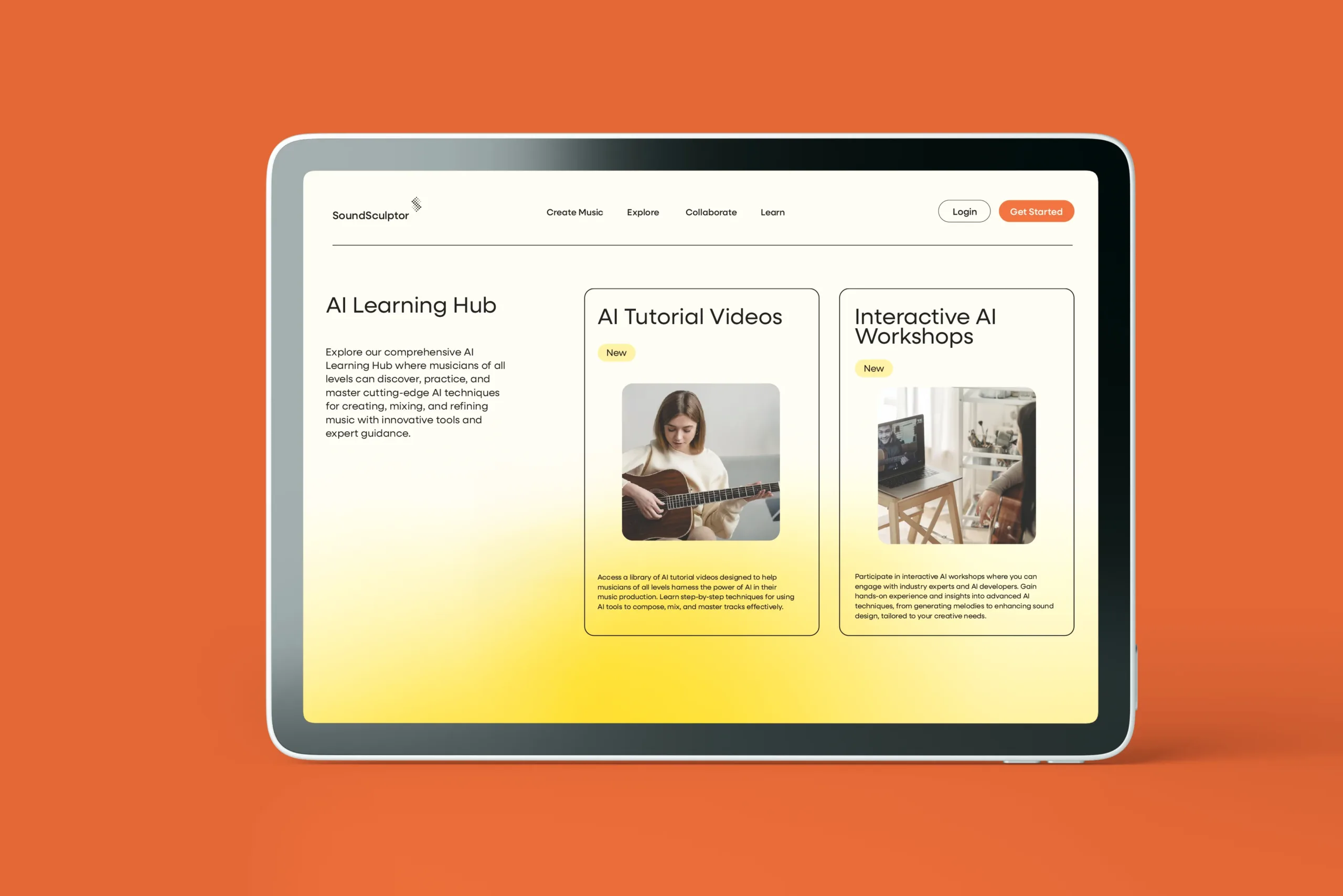At ArtVersion, we’ve had the privilege of working at the intersection of design and technology, witnessing firsthand how artificial intelligence (AI) is transforming industries. Designing UX for AI products is a unique challenge that we embrace with enthusiasm and creativity. In this article, I’ll share our insights into the intricacies of UX design for AI, exploring user interface (UI) design aspects, usability, the law of familiarity, accessibility, and the marketing perspective.

Understanding the AI Context
AI products, ranging from virtual assistants and recommendation systems to autonomous vehicles and healthcare diagnostics, operate on sophisticated algorithms that perform tasks traditionally requiring human intelligence. Our mission at ArtVersion is to bridge the gap between this complexity and the end-users, ensuring that AI technology is not only powerful but also intuitive and accessible.
The Role of User Interface (UI) in AI Products
The user interface is the first point of interaction between the user and the AI system. To demystify complex AI processes and make them more approachable, we focus on simplicity and clarity in our designs. A clean, minimalistic interface guides users seamlessly through their tasks without overwhelming them with too much information.
Real-time feedback and visual cues play a crucial role in helping users understand what the AI is doing and why. For instance, showing how a recommendation engine arrived at a particular suggestion can enhance user trust. Consistency in UI elements, such as colors, typography, and icons, helps users predict and understand the AI product’s behavior, making interactions more intuitive.
Usability in AI Products
Usability is a cornerstone of UX design, ensuring that products are efficient, effective, and satisfying to use. At ArtVersion, we prioritize intuitive interactions that leverage familiar patterns, reducing the learning curve for users. Robust error-handling mechanisms are essential, allowing users to recover gracefully from mistakes with clear error messages and corrective suggestions.
Transparency in AI’s decision-making process is critical for usability. By providing visualizations or detailed explanations, we help users understand and trust the AI system. This transparency enhances the overall user experience, making the technology more approachable.
The Law of Familiarity
The law of familiarity, rooted in Gestalt psychology, suggests that people are more likely to understand and accept things that are familiar to them. In our designs, we leverage familiar patterns and metaphors to make AI interactions more relatable. For example, voice assistants using conversational patterns similar to human interactions can feel more natural and intuitive.
Introducing AI features gradually, rather than all at once, helps users acclimate to new functionalities without cognitive overload. This incremental approach enhances user acceptance and makes the transition to AI-powered interactions smoother.
Accessibility in AI Products
Accessibility ensures that AI products are usable by people with a wide range of abilities. Inclusive design is at the heart of our approach, considering visual, auditory, motor, and cognitive impairments from the outset. Voice-activated AI products, for instance, should support voice commands for users with motor impairments.
Providing multiple ways to interact with the AI product, such as visual interfaces complemented by voice controls and keyboard shortcuts, caters to diverse user needs. Adhering to accessibility standards like the Web Content Accessibility Guidelines (WCAG) ensures that our AI products meet legal and ethical requirements, making technology accessible to all.
Solving Design Problems in AI
Designing for AI involves addressing unique challenges. We start with a deep understanding of users’ needs, behaviors, and pain points through user research techniques such as interviews, surveys, and usability testing. Rapid prototyping and iterative testing allow us to validate design concepts and refine them based on user feedback, an essential approach given the evolving nature of AI technology.
Ethical considerations are paramount in our design process. AI products must be fair, transparent, and accountable, considering the impact of AI decisions on different user groups and mitigating potential biases.
Marketing AI Products through Design
The design of AI products plays a pivotal role in their marketability. A strong visual identity and consistent branding help differentiate AI products in a competitive market. Design elements such as logos, color schemes, and typography reflect the product’s unique value proposition, making a lasting impression on potential users.
A superior user experience can be a key differentiator in marketing. Highlighting the intuitive design, ease of use, and accessibility features in marketing materials can attract and retain users. Storytelling is a powerful tool in conveying the benefits of AI products. Case studies, user testimonials, and compelling narratives help potential users understand the value and impact of the product.
Conclusion
Designing UX for AI products is a multifaceted challenge that requires a deep understanding of user needs, a commitment to usability and accessibility, and a strategic approach to web design. By solving design problems with a user-centered mindset and leveraging the principles of familiarity, we can create AI products that are not only innovative but also intuitive and accessible. Moreover, the design of these products plays a crucial role in their market success, making it essential to integrate design thinking into the marketing strategy. At ArtVersion, we’re excited to continue pushing the boundaries of what’s possible in AI design, creating user experiences that empower and delight users.









